How to Resolve Ticketmaster Error 401 Not Allowed?
Some Windows users are encountering the Error 401 Not Allowed when attempting to purchase tickets with the TicketMaster platform. In most cases, affected users can search for tickets just fine, but the error appears as soon as they attempt to select a date to complete the purchasing process.
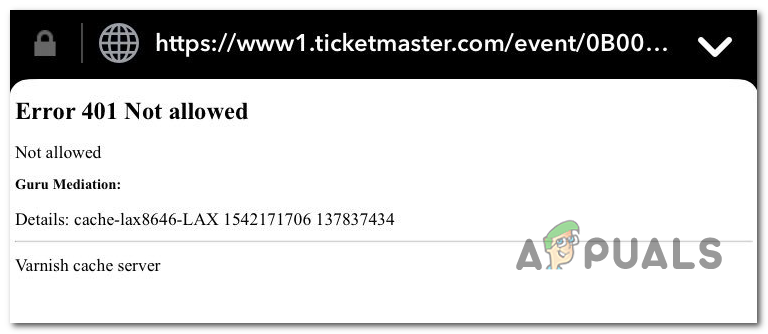
In most user-documented cases, Error 401 Not Allowed will appear due to a temporary cached file or cookies that were created by the TicketMaster system. To fix it, all you need to do is to follow a set of instructions to clear your browser cache & cookies.
Keep in mind that TicketMaster is very strict with users that are using Proxy servers or VPN clients. If you’re using one, you might need to disable the surfing anonymity solution before being able to access the TicketMaster platform again.
In other cases, affected users have reported that a network inconsistency was responsible for triggering the Error 401 Not Allowed. Most users have managed to fix the issue in this case by restarting the networking device.
However, the error that you’re seeing can also be the result of a temporary ban that was enforced on your account. If this scenario is applicable, you’ll need to wait 24 hours for the ban to expire or you’ll need to create a different account (if you can’t afford to wait).
Method 1: Cleaning your Browser Cache & Cookies
As it turns out, this particular issue can very well be caused by a temporary cached file or a cookie created by the TicketMaster service. Since there are a lot of user reports of this kind, it’s very likely that TicketMaster has a tendency of creating corrupted cookies that will end up blocking the user’s ability to book and purchase tickets from within the platform.
Fortunately, several affected users that encountered this issue have confirmed that they managed to resolve the issue by accessing the browser’s settings and clearing the cookies & cache folders. However, the steps of doing so will be different depending on the type of browser that you’re using.
To accommodate every possible scenario, we’ve compiled several sub guides that will allow you to clear the cache & cookies of Chrome, Firefox, Edge, Internet Explorer, and Opera. Follow whichever guide is applicable depending on the browser that you’re using.
Cleaning the Cache & Cookies of Chrome
- Open Google Chrome and ensure that every other tab is closed (aside from the active one).
- Next, click on the action button (three-dot icon) in the top-right section of the window.
- After you manage to get inside the Settings menu, scroll down all the way to the bottom of the screen and click on Advanced to bring up the invisible menu. This will end up revealing the hidden items.
- Once the hidden menu becomes visible, scroll all the way down and click on the Privacy and Security tab.
- After you manage to access the Privacy and Security tab, click on Clear browsing data.
- Next, select the Basic tab and ensure that the boxes associated with Cached images and files and Cookies and other side data are enabled.
- Now, select the Time range to All time using the drop-down menu, then start the process by clicking on Clear data.
- Wait until the cookies & cache cleaning process is complete, then attempt to use the TicketMaster platform to see if the issue is resolved.
Cleaning the Cache & Cookies of Firefox
- Start by checking every additional Firefox (except for the one that is currently active).
- Next, click on the action button in the top-right corner of the screen, then click on Options from the newly appeared menu.
- Once you’re inside the Settings menu, click on Privacy & Security from the left-hand table. Next, scroll down to Cookies and Site Data and click on Clear data to bring up the temp built-in cleaning utility.
- Inside the Clear data menu, check the boxes associated with Cookies and Site Data and Cached Web Content.
- Once the cleaning process is ready to go, click on Clear to begin the process of cleaning your web content data.
- After the process is complete, restart your browser and check to see if the problem is now resolved and you are able to use the TicketMaster platform properly.
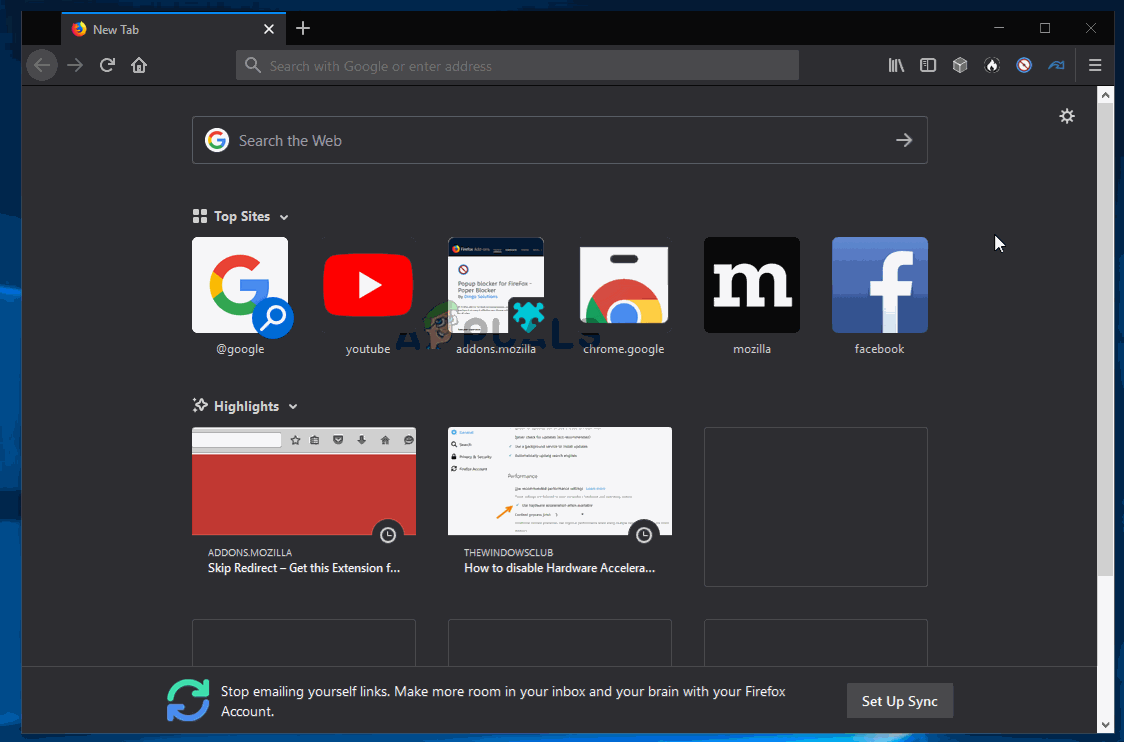
Cleaning the web cache of Firefox
Cleaning the Cache on Opera
- Open Opera and click on the icon in the top-left corner of the screen.
- From the newly appeared context menu, click on Settings.
- Once you’re inside the Settings menu, click on Advanced, then select the Privacy & security tab from the vertical menu on the right.
- With the Privacy & security menu selected, move over to the right-hand menu and scroll down to the Privacy tab. When you get there, click on Clear browsing data.
- Inside the Clear browsing data tab, set the mode to Basic, then put the Time range to All Time.
- After the Clear browsing data window opens up, check the boxes associated with Cookies and other site data and Cached images and files.
- Now that the cleaning utility is configured, click on Clear browsing data and see if the problem is resolved.
- Once the cookies & cache are cleaned, restart your browser and see if the Error 401 Not Allowed is no longer appearing when you try to use the TicketMaster platform.
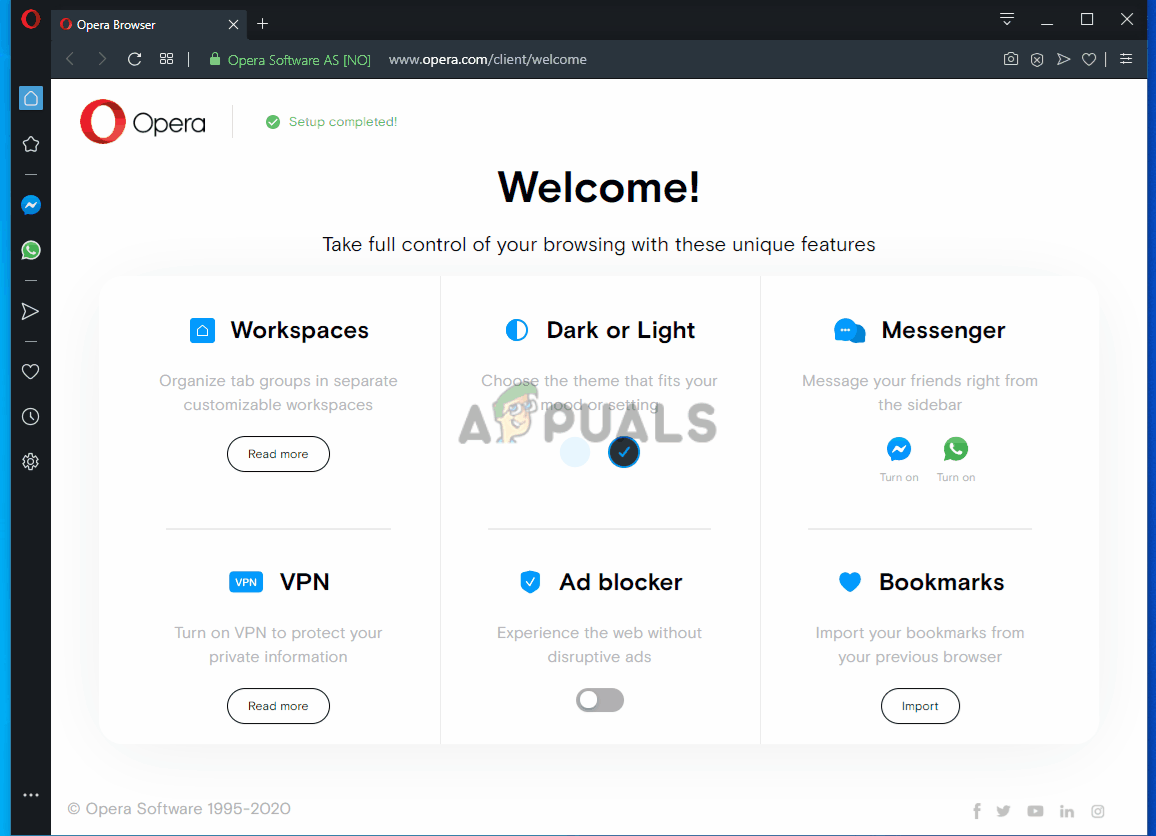
Cleaning the Cache on Internet Explorer
Note: The instructions below will apply regardless of the version of Internet Explorer that you’re using.
- Open your Internet Explorer application and click on the Settings icon in the top-right corner.
- Once the Settings context menu appears, expand the Safety sub-menu and click on Delete browsing history.
Note: Additionally, you can go to Settings > Internet Options, select the General tab and then click Delete under Browsing history to reach the same menu. - Once you’re inside the Delete Browsing History tab, check the boxes associated with Temporary Internet files and website files and Cookies and website data (while unchecking everything else).
- Now that the utility is ready to go, click on Delete and wait for the operation to complete.
- After the process is complete, restart your computer and see if the TicketMaster issue has been resolved.
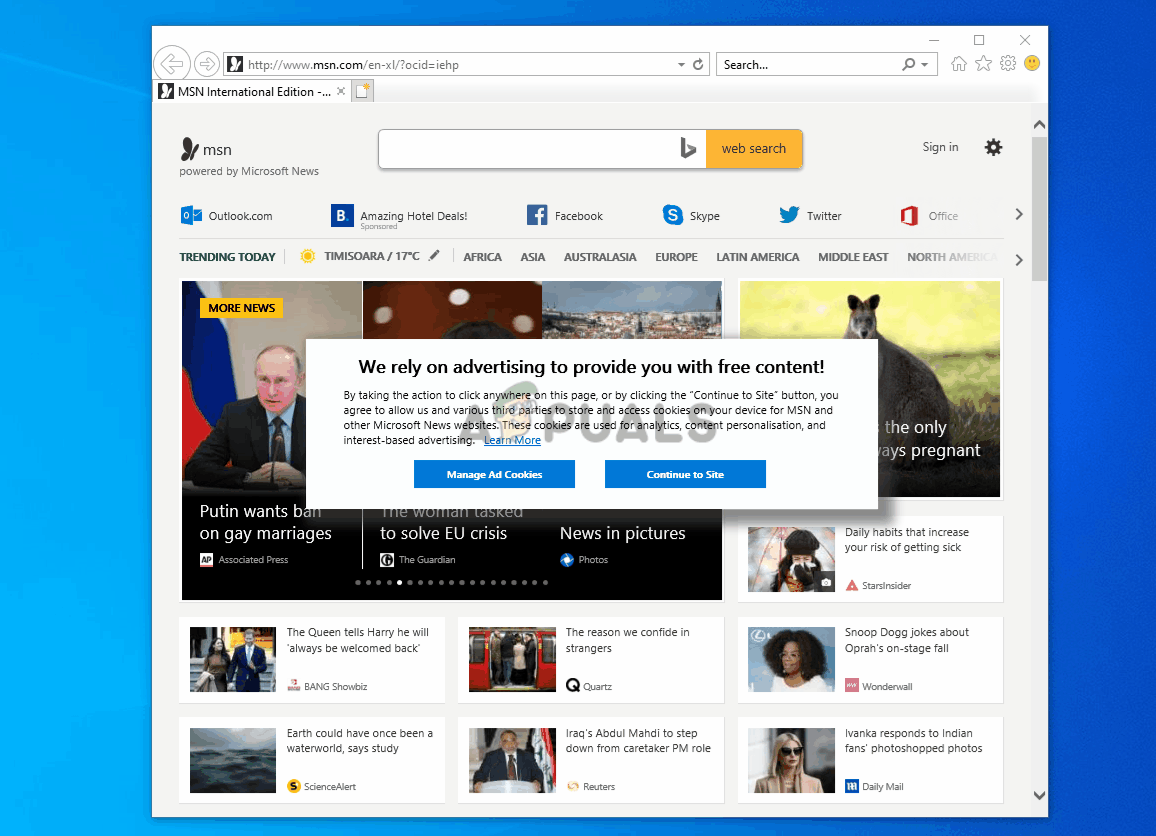
Cleaning the Cache on Edge
- Open Microsoft Edge and click on the hub icon (top-right section of the screen).
- Next, select the History tab from the newly appeared vertical menu, then click on the Clear Icon hyperlink.
- Once you’re inside the Clear Browsing data tab, check the boxes associated with Cookies and saved website data and Cached data and files while unchecking everything else.
- When you are ready to start the cleaning process, click on Clear and wait for the process to complete.
- After the process is complete, attempt to use the TicketMaster platform and see if the issue is resolved.
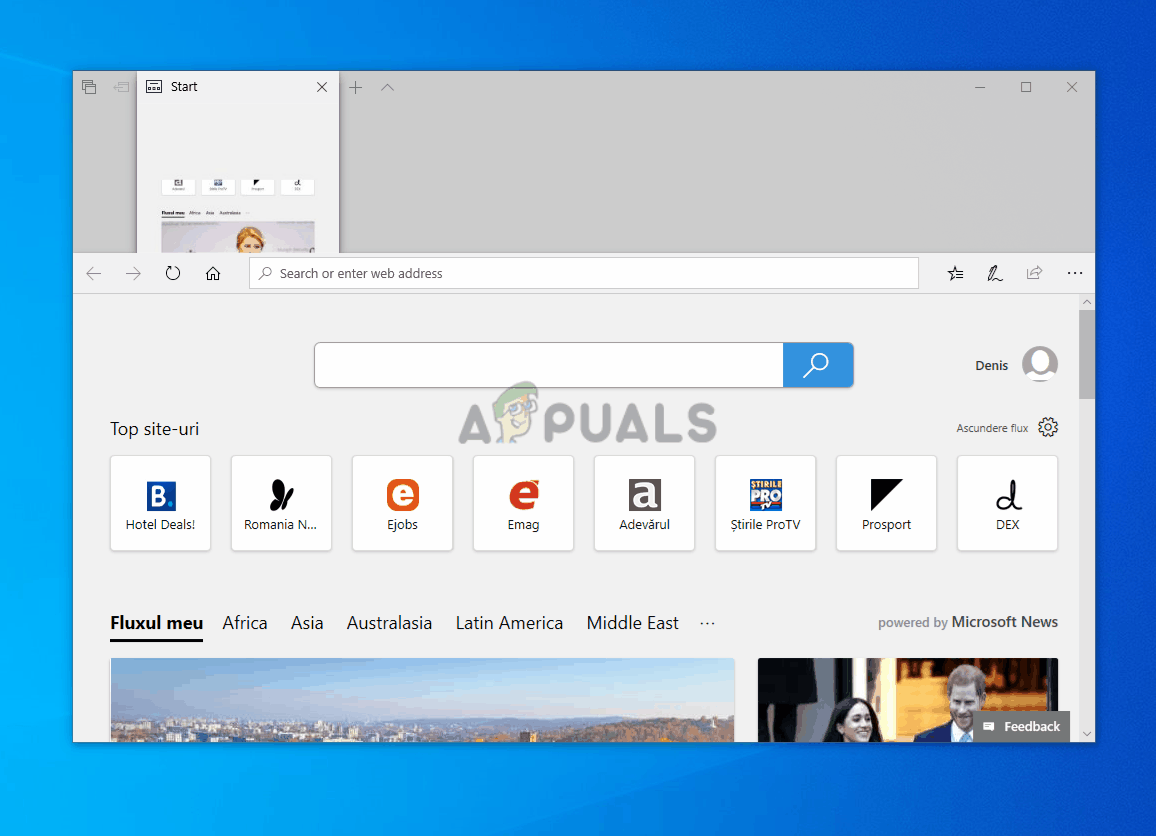
In case you’ve cleared your browser cached data\ & cookies and you’re still encountering the Error 401 Not Allowed, move down to the next potential fix below.
Method 2: Disabling VPN client or Proxy server (if applicable)
If clearing your browser didn’t resolve the issue for you, keep in mind that the TicketMaster Platform doesn’t play well with Proxy servers or VPN clients. And as it turns out, a lot of anonymity services are outright being blocked by this ticketing platform.
Several affected users have reported that they’ve only been able to resolve the issue by disabling their proxy server or VPN client that they were using. The good news is, you only need to disable it while you use the Ticketing platform (you can then enable it again).
We created two separate guides that will help you disable your VPN or proxy server in case you’re using one.
Disabling Proxy server
- Open up a Run dialog box by pressing Windows key + R. Next, type ”ms-settings:network-proxy’ and press Enter to open up the Proxy tab of the Settings app.

Run dialog: ms-settings:network-proxy - Once you arrive inside the Proxy tab of the Settings menu, move down to the Manual Proxy Setup section. Next, go to the right-hand section of the screen and uncheck the box associated with Use a proxy server.
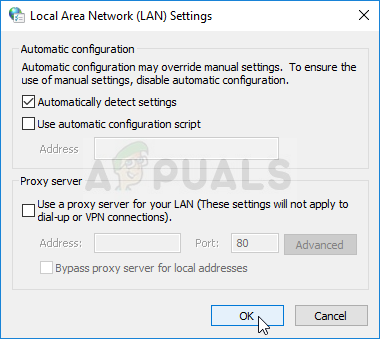
Disable the use of Proxy Servers - After you manage to disable the Proxy server, restart your computer and see if the problem is resolved at the next computer startup by attempting to access the TicketMaster platform again.
Disable / Uninstall VPN client
The steps of disabling your VPN client are dependent on the type of implementation that you’re using. If you installed a desktop VPN client, you will need to access the specific settings menu and disable the VPN connection from there.
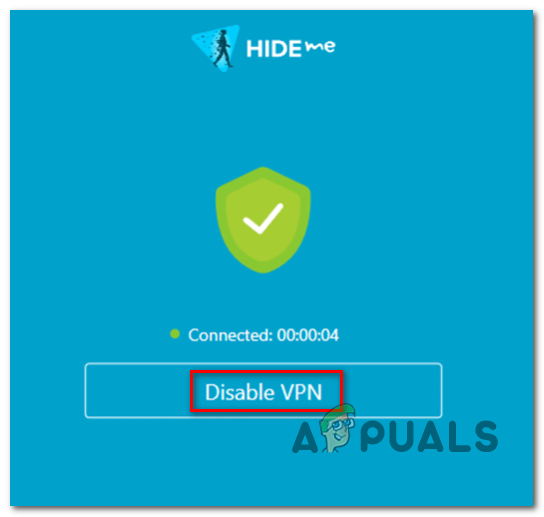
However, if you have set up a VPN connection through the Windows 10 built-in feature, here’s a quick guide on disabling it:
- Press Windows key + R to open up a Run dialog box. Next, type ‘ms-settings:network-vpn’ and press Enter to open up open up the VPN tab of the Settings app.
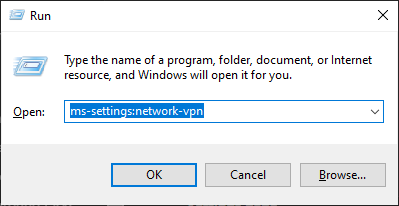
Accessing the VPN client - Inside the VPN connection tab, move over to the right-hand side section and click on your VPN, then click Remove from the context menu to prevent it from interfering with the TicketMaster platform.

Removing the VPN client
Method 3: Restart your Router/modem
As it turns out, the Error 401 Not Allowed might also be resolved by restarting your networking device (router or modem). It’ s possible that a network inconsistency ends up preventing some information packets from being sent to the server.
If this scenario is applicable and your ISP has no issues currently, you should be able to fix the issue by forcing a network restart.
To perform this procedure, simply press the On/Off button once and wait for 30 seconds or more before pressing it again. Additionally, you can simply disconnect the power cable from the power outlet, wait for half a minute and then plug it in again.
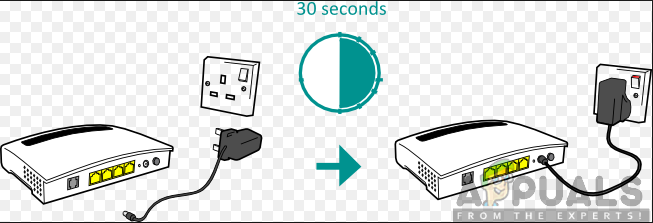
If you already did this and the Error 401 Not Allowed is still appearing when you try to use the TicketMaster platform, move down to the final method below.
Method 4: Wait 24 hours
As it turns out, the TicketMaster platform might trigger the Error 401 Not Allowed in instances where the filtering algorithm things that you are a bot. In most cases, this will happen if you refresh too many times or you access the same page with multiple devices that end up pinging TM with your code.
If this scenario is applicable and the filtering algorithm has triggered the lock, you have no alternative but to wait for the temporary ban to expire. In this case, the issue will be automatically resolved after 24 hours.
Keep in mind that bypassing the temporary ban is risky and hard to do since blockage is enforced on your account rather than your IP. The best way to resolve the issue, in this case, is to simply wait for the time period. And in case you can’t afford to wait, create a different account and get your tickets with that one.





